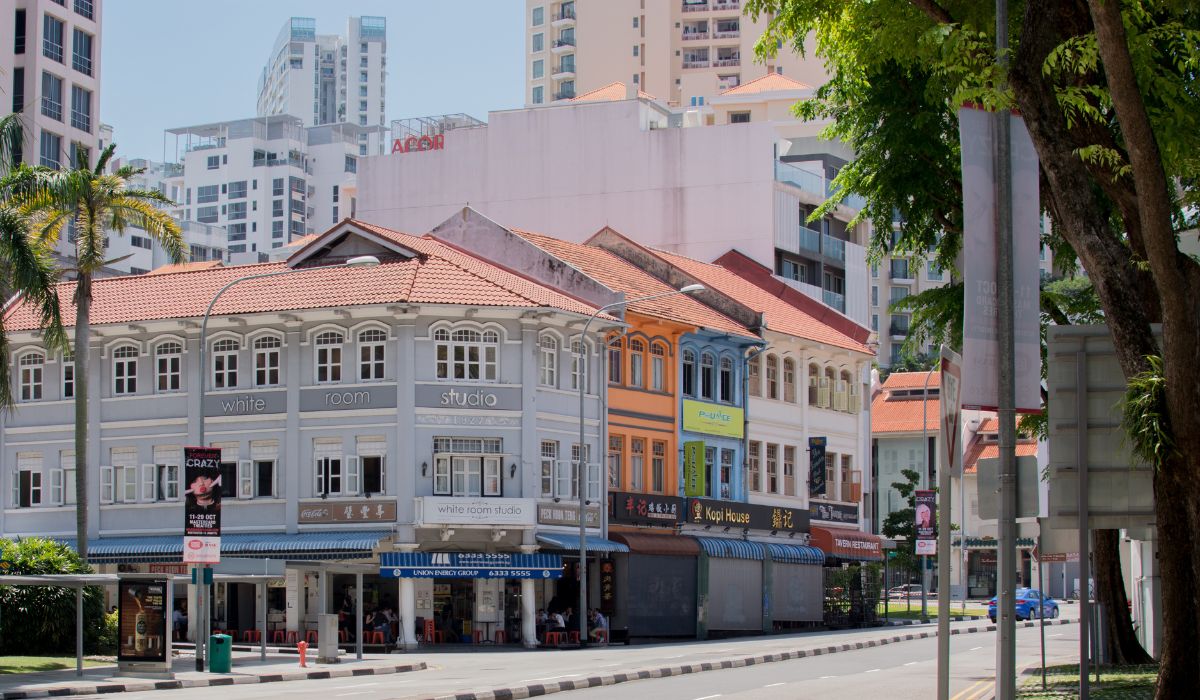Here’s what you need to know about SRS Top Up
Building your retirement nest egg in Singapore takes a whole lot of effort and strategy. There’s no one-size-fits-all solution to growing your nest egg. Different people get different results, based on their experiences and circumstances.
But in Singapore, there are two solid strategies that can help you achieve your goals. The first is to top up your CPF. The second one, which we will focus more on, is to top up your SRS account.
When you do this, you’ll benefit from tons of tax savings and enjoy a bigger retirement fund. But how exactly can you do this?
Here at OMY, you will discover the following:
What Is an SRS Account?
Unlike the Central Provident Fund or CPF, the Supplementary Retirement Scheme or SRS is voluntary.
This was introduced by the Singapore government to enable people to save more for their retirement. The funds you put in this account will be invested in bonds, stocks, endowment plans, and other safe investments.
All the gains earned from the investments are also tax-free before the withdrawal. Upon retirement, only 50% will be taxable. Considering this, it will give you much-needed tax relief, although it’s still subject to limitations.
Those who want to participate in this scheme must open an account. Because it is not mandatory, it also doesn’t have a fixed contribution rate so you can put in as little as you want.
Want to learn more about the Supplementary Retirement Scheme, including how to open one?
Read: Guide To Supplementary Retirement Scheme (SRS) Account In Singapore
How Much Can I Top Up SRS?
Foreigners in Singapore may open an SRS account (unlike CPF) and enjoy tax deductions up to the maximum amount.
The SRS top up limit for Singaporeans and PRs is S$15,300 annually. Meanwhile, foreigners have a SRS top up limit of S$35,700 annually.
When Should I Top Up SRS?
Contributions can be made any time of the year. Ideally, you should top up before the prescribed retirement age is raised once more.
Why Top Up Your SRS Account?
Even if you’re still in your 20s, 30s, or 40s, you should already think about your retirement. The year you start making contributions to your SRS account matters since it affects when you can withdraw it.
Your SRS funds can be withdrawn without any penalty upon the statutory retirement age when you make your first contribution.
Just this July 2022, the retirement age in Singapore was raised from 62 to 63. By 2030, it will be 65.
The importance of topping up your SRS account is so popular that there’s even a whole movement that motivates people to top up S$1 to their account.
Considering you can put as little as S$1 into your account, why delay the age at which you can get all your money without penalty? This way, you can ensure earlier access to your retirement funds without any hassle.
SRS vs Special Account: Which Should I Choose?
A lot of people wonder whether their money should go to top up their special account or SRS. Take a look at the table below to see if you should top up a special account or SRS.
| SRS | CPF | |
|---|---|---|
| Interest rate | 0.05% per annum (can be higher depending on what you want to invest in) | 4% per annum |
| Is it tax deductible? | Yes | Yes |
| Contribution cap for tax relief | S$15,300 for Singaporeans and PRs | S$16,000 (S$8,000 family + S$8,000 personal) |
| Withdrawal conditions | Retirement age (currently 63 years old) Subject to 5% penalty for early withdrawal | 65 (default age) |
| Opening an account | You can open an account with UOB, OCBC, or DBS | Singaporeans and PRs automatically have a CPF account |
Keep in mind that there’s no competition as to whether to choose CPF or SRS, especially since CPF is mandatory. You can simply do both.
Utilizing both strategies to enjoy the maximum tax relief can be done easily. This is crucial, especially for young professionals who do not have families yet, or those that have a sizeable disposable income. If you set aside money while you’re still young, the amount will compound over time.
How to Top Up an SRS Account?
Learning how to top up your SRS account is so easy. It’s as simple as depositing money, although the process may vary depending on the bank you’re using. You can typically do this through mobile bank transfer, going to your bank’s branch, or cheque. Just write down the SRS number at the back.
You may also choose to top up your SRS account through your employer. However, this must be made in cash since it’s not allowed to use the CPF to top up your SRS.
Top Up SRS Account: Advantages You Should Know
If you can top up your account before 2030, you can lock in your retirement age at 63 years old. If you’ve done it before 1 July 2022, your retirement age is considered 62.
Additionally, you can also save on tax per year up to S$15,300, which is its major appeal. In Singapore, you only need to pay personal tax if you earn S$20,000 annually. This means that upon retiring and given you don’t have other taxable income and relief, you can withdraw a staggering
S$40,000 per year from your SRS. This is tax-free. Over a period of 10 years, that’s around S$400,000.
Top Up SRS Account: Disadvantages You Should Know
When it comes to deliberating if “Should I top up SRS,” you need to know the disadvantages of doing it as well.
First, the interest you get is a little low (0.05% p.a.), which is like a regular savings account in Singapore banks. Although you can choose how to invest your money, the returns are not guaranteed since it depends on your investment decisions.
More From OMY: Average Savings Of Singaporeans: How Much Money You Should Save According To Age
If you withdraw your money before retirement age when you first top up your SRS account, you need to pay a 5% fee, and your money will be taxed 100%.
Withdrawal Rules of SRS
SRS has clear withdrawal rules. Take a look at the table below to understand it.
| Withdrawal | SRS Tax | Do You Need To Pay a Penalty fee? (5%) |
|---|---|---|
| Withdrawal on/after the retirement age (can be spread over 10 years from the date of the first withdrawal) | 50% of withdrawal sum (capped at S$400,000 in 10 years) | No |
| Withdrawal due to medical ground | 50% of the withdrawal sum (capped at S$400,000) | No |
| Full Withdrawal due to terminal illness | 50% of the withdrawal sum, less an exempt amount of up to $400,000 | No |
| Withdrawal due to bankruptcy | 100% of the withdrawal sum | No |
| Full withdrawal by a foreigner (at least 10 years holding period) | 50% of the lump sum | No |
| Early withdrawals before the statutory retirement age | 100% of the withdrawal sum | Yes |
Although you can’t reverse top up SRS contributions, SRS gives you better flexibility compared to CPF.
If you change your mind when it comes to your top up SRS account, you just need to pay a 5% penalty fee if you withdraw it before your retirement age, as well as pay SRS tax on 100% of your withdrawal amount.
However, you only have to pay income tax on 100% of the withdrawals if you get it due to bankruptcy. For withdrawals due to death, you can withdraw up to $400,000 tax-free.
Is It Worth It to Top Up Your SRS Account?
If your goal is to plan for your retirement years while lowering your taxes, then the answer is yes. Knowing how to top up your SRS account is a skill everyone in Singapore should know.
It’s a common misconception that only high-income earners need to do this to lessen their taxes. The top up SRS account strategy is very useful for everyone earning a salary close to the median income range of around S$3,700 per month, or more.
As much as you can, do your best to reach the SRS top up limit of S$15,300 (for Singaporeans and PRs) and S$35,700 (for foreigners), to enjoy the best tax savings.
More From OMY: Top Financial Tips For The Sandwich Generation









